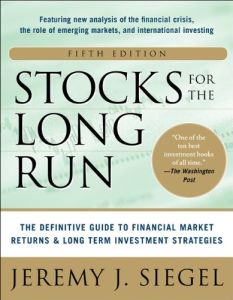加入 getAbstract 阅读摘要

加入 getAbstract 阅读摘要
Jeremy J. Siegel
Stocks for the Long Run
The Definitive Guide to Financial Market Returns and Long-Term Investment Strategies
McGraw-Hill, 2014
看看什么内容?
Wharton professor Jeremy J. Siegel’s highly acclaimed investing handbook offers utility and guidance to anyone buying stocks for the long haul.
Recommendation
Wharton professor Jeremy J. Siegel’s classic text belongs in the hands of any diligent investor. From a practical perspective, his book covers every serious event and variable that could affect a diversified portfolio over the course of many decades. As the market proves daily, investing is complex because all types of news and events – as well as human behaviors – influence investment returns. In more than 400 information-packed pages, Siegel’s revised fifth edition of his classic text helps you better understand this complicated socioeconomic system and shows how that knowledge can improve your finances. While never giving investment advice, getAbstract recommends this best-selling guide to both new and seasoned investors.
Summary
About the Author
Jeremy J. Siegel is a finance professor at the University of Pennsylvania’s Wharton School and a senior adviser at WisdomTree Investments.


















Comment on this summary